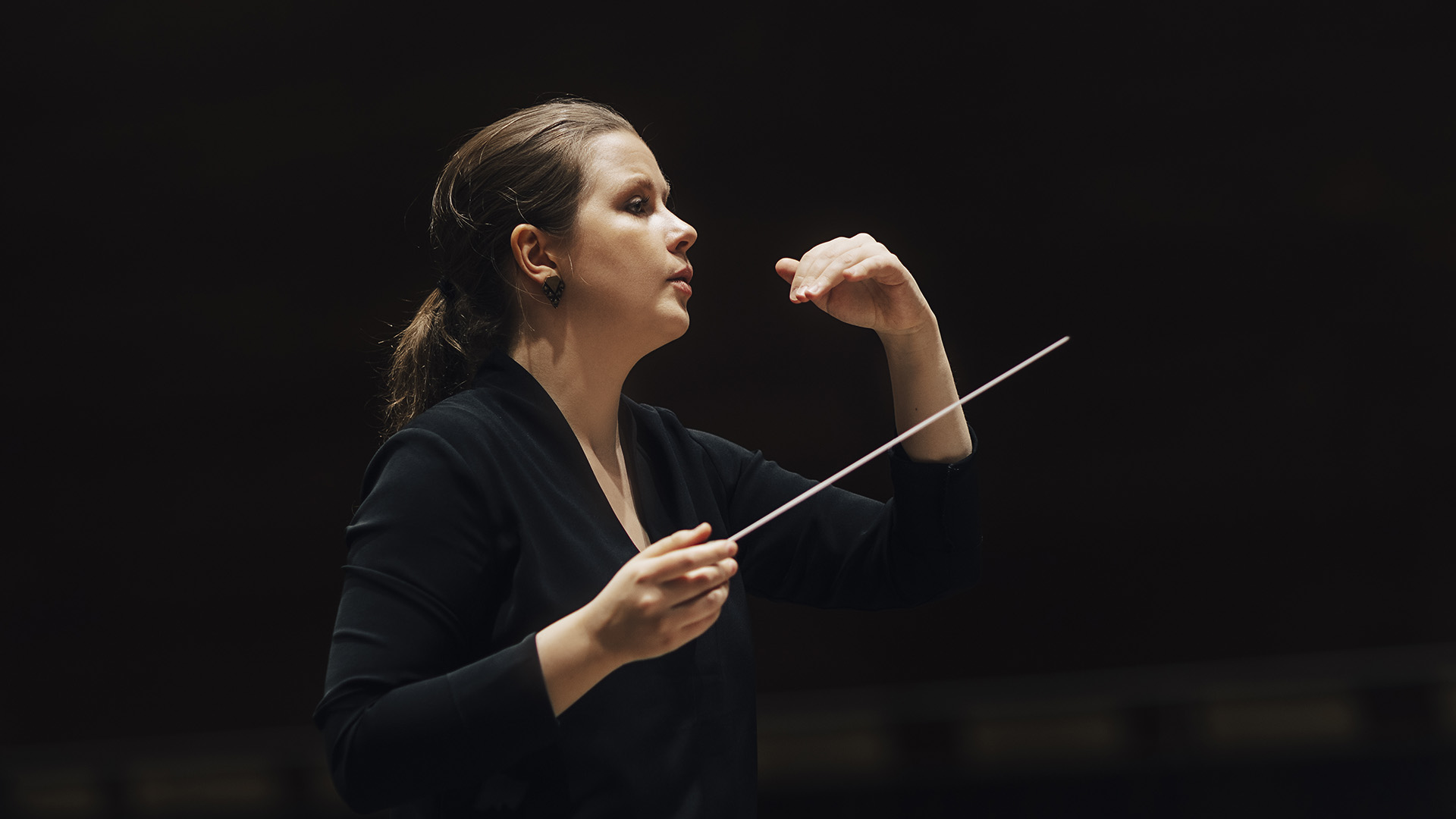Romeo and Juliet, Maria and Tony – doomed love in Renaissance Verona and 1950s Manhattan.
Romeo and Juliet, Maria and Tony – doomed love in Renaissance Verona and 1950s Manhattan. Both Pyotr Tchaikovsky and Leonard Bernstein knew how to weave the world's most famous love story into heart-wrenching music. Heidi Sundblad-Halme was a composer and one of Finland's first professional female conductors. Her ballet The Enchanted Belt is one of the discoveries of the HUOM project, which is bringing forgotten orchestral works to light.
Pyotr Tchaikovsky: Romeo and Juliet
In 1868, fellow composer Balakirev suggested that Pyotr Tchaikovsky (1840–1893) might write something based on Shakespeare’s tragedy Romeo and Juliet. Balakirev even went so far as to issue precise instructions concerning the structure, keys and the nature of the themes. The premiere of the resulting fantasy overture in 1870 was not a great success; neither Tchaikovsky nor Balakirev was altogether satisfied. Twice Tchaikovsky revised the score, and the final version was not premiered until 1886. Again the reception was cool; the first-night audiences in both Vienna and Paris were far from impressed. Yet Romeo and Juliet is nowadays one of Tchaikovsky’s best-known and best-loved works. It does not as such tell the story, yet the characters are easily recognisable: the Friar Lorenzo who means well but whose good intentions lead to tragedy, the conflicting families the Montagues and Capulets, and the doomed star-struck lovers.
Heidi Sundblad-Halme: The Enchanted Belt
The half-hour ballet The Enchanted Belt by Finnish composer-conductor Heidi Sundblad-Halme (1903–1973) was first performed at the Finnish Opera in 1939. It then got put aside and forgotten – like many works by female composers at the time – and is only now being revived as part of the HUOM project of the Helsinki Philharmonic Orchestra seeking out undeservedly overlooked repertoire. Described by the composer as a choreographic fairytale, The Enchanted Belt reflects the fantasy world that was her hallmark – a world of goblins, fairies and wild beasts. Ruling over them all is the god Pan, represented as in many of her other works by a solo flute. A triangular drama that ends in a duel and death is played out by three characters lost in the forest: Nito, Carita, whose enchanted belt makes her irresistibly seductive, and a hunter. Sundblad-Halme probably also wrote the script. The music bears certain similarities with the second and third movements of her orchestral suite opus 11 she had been working on for years. The suite from the ballet Enchanted Belt is compiled by conductor Emilia Hoving.
Leonard Bernstein: Symphonic Dances
Many an artist has been inspired by Shakespeare’s tragedy Romeo and Juliet, not least Pyotr Tchaikovsky. But one of the best-known variations on this ancient story is undoubtedly West Side Story, the musical by Leonard Bernstein that transfers the events from Verona to modern Manhattan. in 1960, three years after the premiere, he chose nine scenes from it as a suite called Symphonic Dances. A familiarity with the story is not, however, necessary when listening to the suite, though it does trace a similar dramatic span. “Why are these dances called symphonic?” asked Bernstein’s assistant Jack Gottlieb and replied: “Simply because the dance music, even in its original format, is symphonically conceived. Relatively few thematic ideas, combined with each other and metamorphosed into completely new shapes, are all that are necessary to meet the varying dramatic requirements, This is music on its own terms, music that does not have to depend upon presupposed knowledge of the unfolding events on stage.”
Emilia Hoving
Finnish conductor Emilia Hoving (born 1994) is firmly established internationally. In the 2024–2025 season, Hoving returns to conduct the Helsinki Philharmonic Orchestra, the Adelaide Symphony Orchestra, the BBC National Orchestra of Wales, the Malmö Symphony Orchestra, the Norwegian Radio Orchestra, the Philharmonia Orchestra, and the Royal Stockholm Philharmonic Orchestra. She also makes her debut with the Netherlands Radio Philharmonic at the Concertgebouw. Additional first appearances include the Belgian National, the Castilla y León Symphony, the Royal Scottish National, the Stavanger Symphony, the Strasbourg Philharmonic, the Tasmanian Symphony, and the Trondheim Symphony orchestras.
Emilia Hoving began her conducting studies in 2015 with Jorma Panula and later continued at the Sibelius Academy in Helsinki with professors Sakari Oramo and Atso Almila. Hoving’s career was launched as an assistant to Hannu Lintu at the Finnish Radio Symphony Orchestra (2019–2020) and Mikko Franck at the Orchestre Philharmonique de Radio France (2020–2022).
Violin 1
Kreeta-Julia Heikkilä
Emma Vähälä
Eija Hartikainen
Katariina Jämsä
Sanna Kokko
Elina Lehto
Ilkka Lehtonen
Jani Lehtonen
Kari Olamaa
Petri Päivärinne
Kalinka Pirinen
Harry Rayner
Satu Savioja
Tuuli Talvitie
Violin 2
Anna-Leena Haikola
Kamran Omarli
Teija Kivinen
Teppo Ali-Mattila
Heini Eklund
Dhyani Gylling
Matilda Haavisto
Liam Mansfield
Siiri Rasta
Krista Rosenberg
Angeles Salas Salas
Virpi Taskila
Kaisa Laurila
Alexis Mauritz
Viola
Atte Kilpeläinen
Torsten Tiebout
Lotta Poijärvi
Petteri Poijärvi
Aulikki Haahti-Turunen
Tuomas Huttunen
Kaarina Ikonen
Carmen Moggach
Liisa Orava
Markus Sallinen
Hajnalka Standi-Pulakka
Maria Mangeloja
Cello
Beata Antikainen
Saara Särkimäki
Jaakko Rajamäki
Jaani Helander
Veli-Matti Iljin
Fransien Paananen
Ilmo Saaristo
Tommi Wesslund
Sami Mäkelä
Maria Morfin Venäläinen
Bass
Ville Väätäinen
Tuomo Matero
Paul Aksman
Miranda Erlich
Oskari Hänninen
Eero Ignatius
Venla Lahti
Juraj Valencik | Flute
Päivi Korhonen
Katja Ceder
Hanna-Kaarina Heikinheimo
Oboe
Hannu Perttilä
Nils Rõõmussaar
Simeon Overbeck
Clarinet
Marco Conti Bellocchi
Osmo Linkola
Anna-Maija Korsimaa
Heikki Nikula
Bassoon
Markus Tuukkanen
Erkki Suomalainen
Vertti Tapanainen
Horn
Ville Hiilivirta
Mika Paajanen
Sam Parkkonen
Rodrigo Freitas
Trumpet
Thomas Bugnot
Obin Meurin
Michael Olsen
Mika Tuomisalo
Trombone
Victor Álvarez Alegria
Valtteri Malmivirta
Jussi Vuorinen
Tuba
Mikko Marttila
Timpani
Tomi Wikström
Percussion
Xavi Castelló Aràndiga
Pasi Suomalainen
Atte Karhinen
Markus Ketola
Elmeri Uusikorpi
Naoki Yasuda
Harp
Minnaleena Jankko
Kirsti Vartiainen
Extra
Olli-Pekka Tuomisalo |

